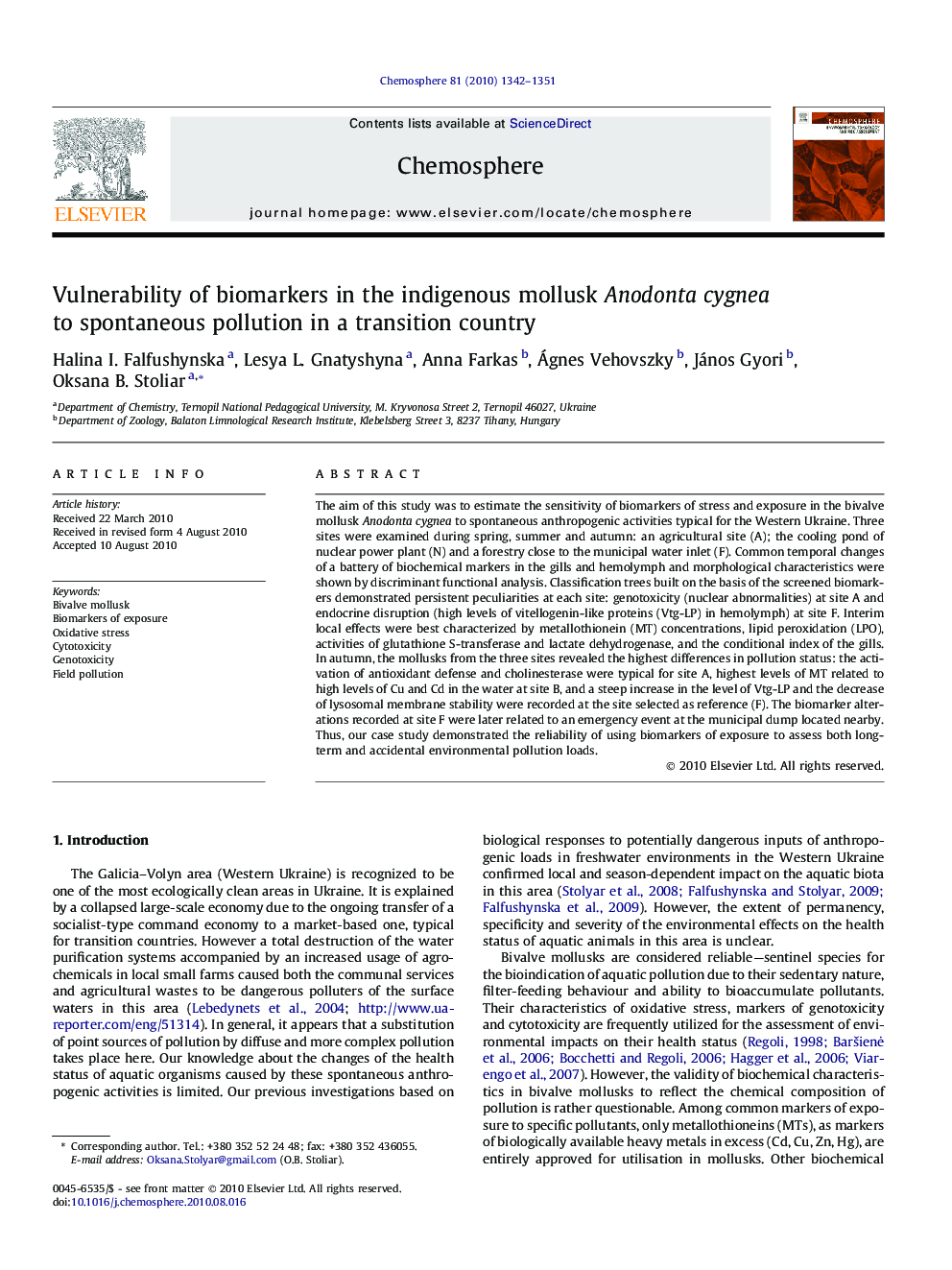| Article ID | Journal | Published Year | Pages | File Type |
|---|---|---|---|---|
| 4411386 | Chemosphere | 2010 | 10 Pages |
The aim of this study was to estimate the sensitivity of biomarkers of stress and exposure in the bivalve mollusk Anodonta cygnea to spontaneous anthropogenic activities typical for the Western Ukraine. Three sites were examined during spring, summer and autumn: an agricultural site (A); the cooling pond of nuclear power plant (N) and a forestry close to the municipal water inlet (F). Common temporal changes of a battery of biochemical markers in the gills and hemolymph and morphological characteristics were shown by discriminant functional analysis. Classification trees built on the basis of the screened biomarkers demonstrated persistent peculiarities at each site: genotoxicity (nuclear abnormalities) at site A and endocrine disruption (high levels of vitellogenin-like proteins (Vtg-LP) in hemolymph) at site F. Interim local effects were best characterized by metallothionein (MT) concentrations, lipid peroxidation (LPO), activities of glutathione S-transferase and lactate dehydrogenase, and the conditional index of the gills. In autumn, the mollusks from the three sites revealed the highest differences in pollution status: the activation of antioxidant defense and cholinesterase were typical for site A, highest levels of MT related to high levels of Cu and Cd in the water at site B, and a steep increase in the level of Vtg-LP and the decrease of lysosomal membrane stability were recorded at the site selected as reference (F). The biomarker alterations recorded at site F were later related to an emergency event at the municipal dump located nearby. Thus, our case study demonstrated the reliability of using biomarkers of exposure to assess both long-term and accidental environmental pollution loads.
